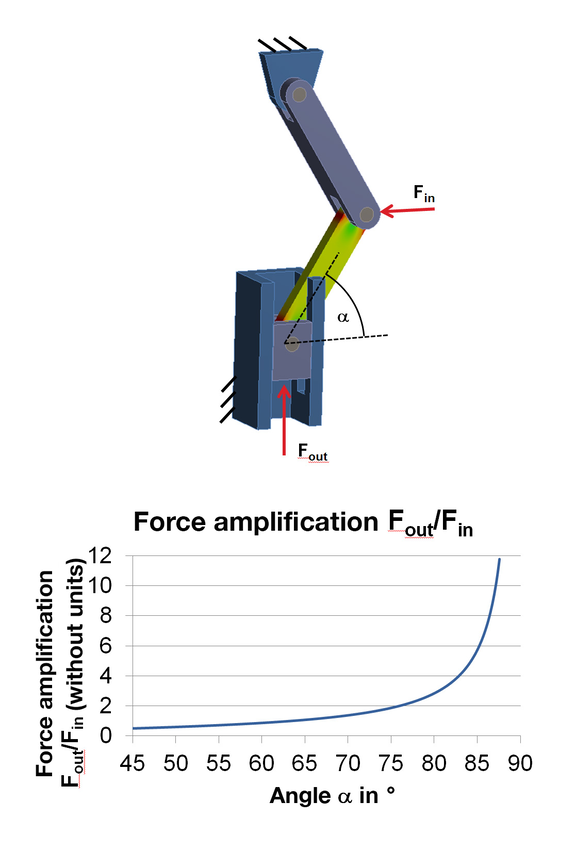FE structural analysis

Based on decades of experience, ISATEC applies finite element analysis FEA efficiently and purposefully in its projects.
These structural simulations are utilised, for instance, to examine frames, casings, components, machine elements, rotors, pressure vessels and supporting structures. Based on calculated deformations, stresses and natural frequencies, strength as well as stiffness and the avoidance of vibrational response are verified. These analyses are conducted in the early design stage with rough models; in the further course of the project, proof is obtained using the realised construction.
The figure shows the initial natural frequency of a slender component using a stranding rotor.
Flow simulation CFD/CHT

With the CFD (computational fluid dynamics) flow simulation, a wide variety of media can be evaluated using different boundary conditions. For instance, various air flows on vehicles are calculated to facilitate optimum flow to the radiators in a great range of driving situations and thus ensuring optimum cooling capacity at all times.
ISATEC uses the CHT method, which is implemented in the established CFD tool FloEFD, as a standard for simulations in the field of heat transfer. With this method, the temperature distributions in fluids and in solids are calculated simultaneously. The aim is to simulate temperature distribution and thus temperature gradients with great reliability. On the one hand, this facilitates calculating pressure loss and heat transfer; on the other hand, temperature fields can be used as a basis for carrying out strength simulations, whereby critical points of the geometry can be identified and defused by adapting the design.
To analyse flow and heat transport processes, we rely on a tight combination of CAD and CFD tools, which drastically reduces the processing time of CFD simulation projects compared to classical CFD. In the development process, many variants can be examined, which achieves a target-oriented optimisation. Areas of application range from small-scale EDP processor coolers to the filling of pressure vessels and flow around vehicles.
Fields of application for flow simulation
- Heat exchangers (air and water cooling)
- Cooling of electric motors and generators (air and water-cooled)
- Equal distribution of cooling media within complex cooling structures or cooler arrangements
- Cooling of electronics components (power electronics, GPU coolers) from the scale of a single cooler via rack inserts to high-performance computing containers to data-mining centres with over 40 HP computing containers
- Air conditioning and analysis of thermal insulation concepts factoring in sunlight
- Hydrogen storage with 70 bar
- Vehicle air flow around the vehicle (cooling air and exhaust gas distribution, e.g. in locomotive formations)
- Engine compartment flow
- Exhaust back-pressure in exhaust systems
- Simulation of charge exchange in internal combustion engines
- Multi-phase flow (e.g. aeration of water bodies)
- Oil filter and oil separator
- Flow with combustion (afterburner in SOFC systems)
- Flow in ring dryers
- Geometry optimisation using adjoint methods (optimisation of uniform distribution and pressure loss reduction)
Simulation tools used
- FloEFD
- OpenFoam
Sample projects
Multi-body simulation MBS

Mechanisms or gears are used for defined guidance of components or to transmit forces and movements. A simple example of a transmission gear unit is the toggle lever shown (left side of the figure), in which the input force Fin is converted to the output force Fout. Due to the kinematics of the toggle lever, the input force is constantly increased in the direction of the extended position (right side of the figure). This property is used e.g. in pressing or clamping devices.
ISATEC is an expert partner from the conception (synthesis) of motion mechanisms and their design all the way to the fully engineered solution. Simulation methods regarding dynamics of multi-body systems (MBS) are used to consider effects such as inertial forces/moments and gyroscopic effects, even for complicated mechanisms. MBS results consist of the path of movement and also the associated loads. By combining MBS with the finite-element method (FEM), it is also possible to determine the elasticity of components and stresses occurring in the components directly for the entire movement sequence, as shown in the figure for a coupling element as an example.